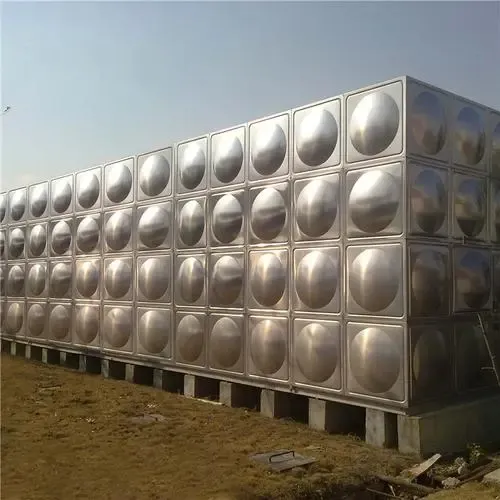loading...
- No. 9, Xingyuan South Street, Dongwaihuan Road, Zaoqiang County, Hengshui, Hebei, China
- admin@zjcomposites.com
- +86 15097380338
- Welcome to visit our website!
grp structures
Understanding GRP Structures Foundations, Applications, and Future Prospects
Glass Reinforced Plastic (GRP), also known as Fiberglass, is a composite material made from a polymer matrix reinforced with glass fibers. It has gained popularity across various industries due to its excellent mechanical properties, lightweight nature, and resistance to corrosion and environmental degradation. GRP structures play a pivotal role in modern construction, transportation, and manufacturing, influencing not only the efficiency of these sectors but also the sustainability of materials used. This article delves into the fundamentals of GRP structures, their applications, and their potential for the future.
What are GRP Structures?
At its core, a GRP structure consists of a polymer (usually epoxy, polyester, or vinylester) that is reinforced with glass fibers. The glass fibers provide tensile strength, while the polymer matrix offers flexibility and environmental resistance. The combination results in a material that has superior characteristics compared to traditional materials like steel or concrete, making GRP an attractive option for various applications.
One of the most significant advantages of GRP structures is their lightweight nature. With a density significantly lower than steel and concrete, GRP allows for easier handling, reduced transportation costs, and the ability to design lighter structures that do not compromise on strength. This property makes GRP particularly appealing in industries such as aerospace, automotive, and marine, where reducing weight can lead to improved fuel efficiency and performance.
Applications of GRP Structures
The versatility of GRP structures means they are employed in a wide range of applications
1. Construction GRP is used in building components such as roofing, flooring, and cladding. Its resistance to corrosion makes it ideal for applications in coastal areas or environments with high humidity.
2. Transportation The automotive and aerospace industries utilize GRP to manufacture lightweight body panels, ductwork, and other parts that contribute to overall vehicle efficiency while maintaining safety standards.
grp structures

3. Marine GRP is a preferred material in boat and yacht manufacturing due to its water resistance, lightweight attributes, and ability to be molded into complex shapes.
4. Wind Energy GRP is extensively used in producing turbine blades for wind energy generation. The material’s strength-to-weight ratio is essential for optimizing energy capture.
5. Industrial Applications GRP is used in chemical processing industries due to its excellent resistance to chemicals and environmental degradation, thus extending the life of equipment and structures.
Future Prospects
The future of GRP structures looks promising as advancements in technology continue to enhance their properties. Innovations in manufacturing processes, such as automated fiber placement and vacuum infusion techniques, are leading to cost-effective production methods that can reduce waste and increase efficiency.
Sustainability is also becoming a focal point in the development of GRP materials. Researchers are exploring bio-based resins and recycled glass fibers to create eco-friendlier alternatives. The push towards a circular economy emphasizes the need for materials that can be recycled or reused, and GRP's adaptability provides a pathway for significant advancements in this area.
Moreover, as the construction and automotive industries seek to reduce their carbon footprints, the lightweight and durable characteristics of GRP can contribute to enhanced sustainability. The continued integration of GRP in composite structures will likely play a crucial role in the global move towards greener technologies.
Conclusion
In summary, GRP structures represent a significant advancement in materials science, offering unparalleled advantages across various fields. Their lightweight nature, mechanical strength, and resistance to environmental factors make GRP an essential material in modern applications. As we look to the future, ongoing innovations in production methods and sustainability practices will ensure that GRP continues to be at the forefront of engineering solutions, driving efficiency and reducing environmental impact across industries. Embracing GRP structures will undoubtedly contribute to a more sustainable and efficient future in multiple sectors, reinforcing their fundamental role in the development of advanced materials.
-
The Rise of FRP Profiles: Strong, Lightweight, and Built to LastNewsJul.14,2025
-
SMC Panel Tanks: A Modern Water Storage Solution for All EnvironmentsNewsJul.14,2025
-
GRP Grating: A Modern Solution for Safe and Durable Access SystemsNewsJul.14,2025
-
Galvanized Steel Water Tanks: Durable, Reliable, and Ready for UseNewsJul.14,2025
-
FRP Mini Mesh Grating: The Safer, Smarter Flooring SolutionNewsJul.14,2025
-
Exploring FRP Vessels: Durable Solutions for Modern Fluid HandlingNewsJul.14,2025
-
GRP Structures: The Future of Lightweight, High-Performance EngineeringNewsJun.20,2025
